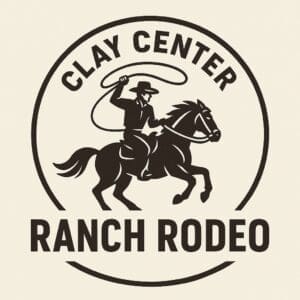Just a few miles from County Road in the Southeast corner of Clay sits a piece of farming history: a 115-year-old limestone barn. Spanning 30x by 180x over two levels, it boasts archways and intricate metal craftsmanship. The details of its textured metal facing and decorative cupolas have landed it on the National Register of Historic Places. It sits along Utah Road, where it was renovated in the early 2000s with grant funds.
What’s perhaps more impressive is that it remains in the family that built it. Sam Auld, a longtime Wakefield-area farmer, is the fourth generation to own and work the land. Sam’s son, Andy, said after retiring, he plans to be the fifth.
It was Sam’s great-grandpa, James Auld, who came from Scotland in 1870 and purchased the land in 1901. In 1908 construction began on the massive barn, the intent to breed and raise horses. This was the family’s primary business until 1922.

Stone was brought from a quarry less than a mile away, the same stone used for the Wakefield Public Library, Sam said. However, during the building process, the family ran into a snafu. When the barn reached the height where its cased openings would curve, the stonemason didn’t know how to complete the arches and halted work.
With a half-finished barn, James’s oldest son, Robert Sr., found an elderly stonecutter, who taught him how to build arches. He showed the workers, and together they completed the barn in the spring of 1910 and named it Wayside.
After more than a century, the barn had fallen into disarray and needed expensive updates. It was restored to the tune of $76,000, $61,000 of which came from the Kansas Heritage Trust Fund. (The program requires a 20% match.) Fallen arches were rebuilt, rotted wood replaced, new eaves put in, and stone refaced. Sam said the original stone was bound with limestone and sand, leading to the mortar being reinforced with cement.

Sam said the original falseway was stored in their machine shed rafters. Contractors were able to use it to shape and support the stone arches during construction.
“They were tickled to death when they found we had that wooden arch,” he said.
This process was spearheaded by his aunt, Jessie Jeanette Braden, AKA Aunt “Toots.” Toots had the barn added to the NRHP in 2001, then secured funding by 2003. The work was done by 2005. She did all of this from her long-time residence in Washington State.

She passed in 2010, the last of the third Auld generation on the farm. The family had her ashes placed in a bottle of her favorite wine and marked the spot with an engraved stone from the barn.
Growing Up With History
From childhood, Sam remembers working on the farm, including stacking hay bales up in the barn’s loft.
“When I was a kid, they first started having square bales instead of the mounds of hay,” he said. “We would stack them and race, jump over two bales. We didn’t have TV and crap back then.”
His father, Robert Jr., farmed his whole life on the same land purchased by James in the 1800s. Wanting to follow the family business, Sam said he was quick to volunteer for his military service to avoid being drafted once he’d begun a farming career. He graduated in 1958 and joined the Navy soon after.
“My brother broke his left leg in a car wreck, so his left leg was shorter; I knew they wouldn’t take him,” he said. “I thought, ‘That leaves me they might draft.” I knew if I got into the farming and had to leave it would screw it all up.”
He served two years in the Navy with time on the Lexington Aircraft Carrier.
After returning, he met his wife, Pat, who lived in Milford.
“Now that’s a good story, my good friend kept talking about this Pat Simon, and I said, ‘Well, you can call her and get a date and I’ll get a date, and we’ll go out,’” he said. But the friend wouldn’t call. “I said I’ll call, but I’m going to ask for a date myself, and I really didn’t know her.” She said yes, and decades later that she knew she would marry him from the first date. “Can you believe that?” he said. “But it didn’t take me long to have that feeling, too. It lasted until she pretty much asked me to marry her. I was ready and I said yes.”
The two were wed on August 18, 1962, and remained married until Pat’s death in 2019.

They had four kids and 12 grandchildren. Their youngest, Debra, died in a car wreck just a mile from her house and the family barn in 2011.
“I never expected to have to put a daughter in the ground,” he said, adding of his dual loss, “I was supposed to go first, but it didn’t work. It just screws me up when I think about it.”
Today he has a “sweetie,” Audrey Sheets, who lives down the road, also on family land. The pair lost their spouses within a few months of one another, and Sam thought they’d have that in common. They were also old friends. Long-time family friends, the pair knew one another in childhood. Then in high school, he asked her to go to town.
“As a farmer, we didn’t go out during the week. Her mother said she would’ve gone during the week, but over the weekend her boyfriend was home.”
He went on to meet Pat; Audrey met her late husband, and decades passed, and both were widowed. This time around, he didn’t know how to get in touch with Audrey. She only had a cell phone, so he asked a mutual acquaintance for her number.
“It was probably two months, and I finally got guts enough to call her,” he said. “So we’ve been together ever since.”
Today, the historic barn houses a herd of calves, which Sam said were sheltered during the rough winter.
The barn was featured in the 2002 book, Barns of Kansas.













